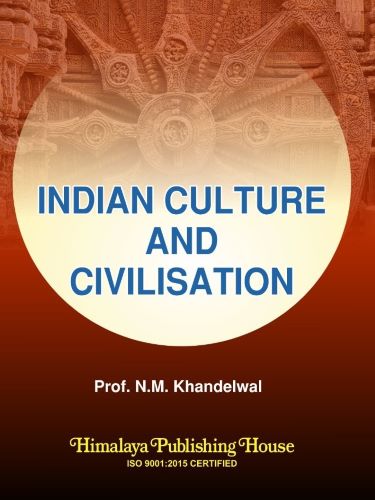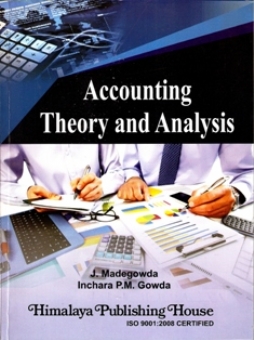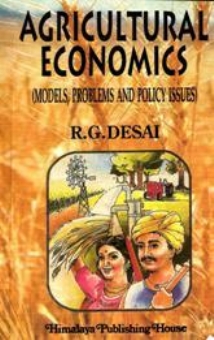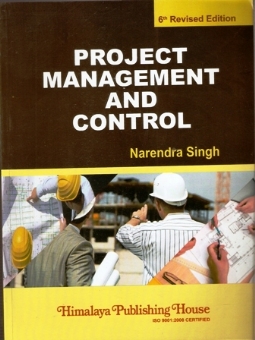The book covers the prescribed syllabus of foundational compulsory subject on India’s cultural heritage in arts, science, technology, health and wellness, governance, public administration and management. The book is divided into 5 modules and 8 chapters. Each chapter starts with learning objectives, structure and ends with summary, learning outcomes, key words and self test questions, including MCQs and their key.
The book is intended to be used as a text book for undergraduate students of all faculties.
Contents –
Module – 1: Introduction to IKS
1. Indian Knowledge System Corpus – A Classification Framework
1.1 Vedas
1.2 Smritis
1.3 Puranas
1.4 History – Epics
1.5 64 Kalas
1.6 Some Unique Aspects of IKS
1.7 Expected Learning Outcome
1.8 Summary
1.9 Key Terms
1.10 Self-Test Questions
Module – 2: Foundational Concepts of Science and Technology
2. Foundation Concept of Science and Technology
2.1 Linguistics
2.2 Number Systems
2.3 Units of Measurement
2.4 Concept of Zero and Its Importance
2.5 Large Number and their Importance
2.6 Place Value of Numbers
2.7 Decimal System
2.8 Unique Representation of Numbers
2.9 Knowledge Pyramid
2.10 Nyaya and Vaisheshika an Approaches to Physical Reality and Its Constituents
2.11 Summary
2.12 Key Terms
2.13 Expected Learning Outcome
2.14 Self-Test Questions
Module – 3: Indian Mathematics And Astronomy in IKS
3. Indian Mathematics And Astronomy in IKS
3.1 Great Indian Mathematician and their Contributions
3.2 Sulab Sutras (Vedic Maths)
3.3 Indian Astronomy and Great Experts and their Contributions
3.4 Indian Vedic Calendar (Panchang) Elements
3.5 Astronomical Instruments in Jantar Mantar of Sawai Raja Jai Singh
3.6 Summary
3.7 Key Terms
3.8 Expected Learning Outcome
3.9 Self -Test Questions
Module – 4: Indian Science And Technology in IKS
4. Indian Science And Technology in IKS
4.1 India’s Science and Technology Heritage
4.2 Sixty Four Kalas in Ancient India
4.3 Indian Heritage in Painting (Chitrasutra)
4.4 Indian Heritage in Town Planning
4.5 Indian Heritage in Architecture – Temple Architecture
4.6 Expected Learning Outcome
4.7 Summary
4.8 Key Terms
4.9 Self -Test Questions
Module – 5: Humanities And Social Science in IKS
5. Yoga Health And Wellness Philosophy (Part 1: Yoga Philosophy)
5.1 Concept of Health, Wellness and Psychology
5.2 Yoga Philosophy of Maharishi Patanjali
5.3 Sources of Yoga Philosophy
5.4 Ashtanga Yoga of Patanjali (8 Steps Yoga Practice)
5.5 Hatha Yoga
5.6 Ashtanga Vinyasa Yoga
5.7 Comparison Between Different Yoga Systems
5.8 Comparison Between Yoga Philosophy and Sankhya Philosophy
5.9 Application of Yoga Philosophy
5.10 Emerging Health and Wellness Issues in Digital Society
5.11 Summary
5.12 Key Terms
5.13 Expected Learning Outcomes
5.14 Self -Test Questions
Appendix
1. Energy Points (Chakras)
2. Five Sheaths/Koshas
3. Yoga For Manager’s Emotional Intelligence
6. Yoga Health And Wellness Philosophy (Part 2: Ayurveda)
6.1 Concept of Ayurveda
6.2 Founders of Ayurveda
6.3 Concept of Tridosha (Humours)
6.4 Ayurvedic Diet Plan
6.5 Rasas (Tastes)
6.6 Impact of Time and Seasons on Ayurvedic Diet
6.7 Benefits and Limitations of Ayurvedic Diet
6.8 Charak’s Principles of Ayurvedic Diet
6.9 Summary
6.10 Key Terms
6.11 Expected learning Outcome
6.12 Self -Test Questions
Appendix
1. Ayurvedic Tridosha Food Chart
2. Viruddhaahar
3. Gita on Food and Sleep
4. Astro-diet
5. Dosha and Rasa Chart
7. Governance System Heritage (Part 3: Governance and Administration)
7.1 Origin of King, his Attributes, Roles and Responsibilities – Manusmriti
7.2 Ideal or Role Model King Attributes – Valmiki Ramayana Epic
7.3 Attributes of a King, his Roles and Responsibilities – Mahabharata Epic
7.4 Attributes, Role and Responsibilities of a King – Kautilyan State
7.5 Need and Importance of a King
7.6 Prakritis of a State
7.7 Summary
7.8 Key Terms
7.9 Expected Learning Outcome
7.10 Self -Test Questions
Appendix
1. Ram’s Preachings to Bharata on Governance.
8. Governance System Heritage (Part 4: Public Administration Heritage)
8.1 Concept of Public Administration, Its Roles and Responsibilities
8.2 Heads of the Departments – Job Analysis
8.3 Recruitment on Key Positions
8.4 Confidential Testing, Enquiry
8.5 Allocation of Duty
8.6 Wages and Salary Administration
8.7 Code of Conduct and Discipline
8.8 Some Do’s and Don’ts for Public Servants and King
8.9 Value of Human Resources
8.10 Organisation Structure in Mahabharata
8.11 Ambassadors/Envoys
8.12 Shukraniti on Public Administration
8.13 Summary
8.14 Key Terms
8.15 Expected Learning Outcome
8.16 Self-Test Questions







